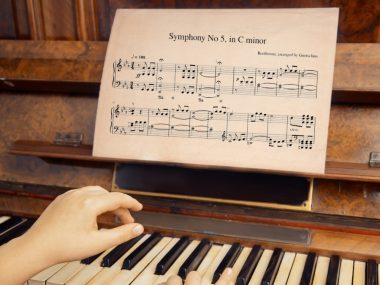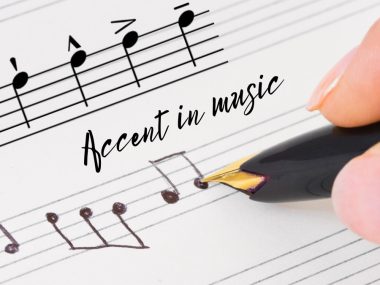Musical terms are often a source of confusion for a lot of people. You get lost between terms like tempo, beats, pace, etc., and you only manage to enjoy the music without fully understanding it.
For most people, that’s okay, as long as they enjoy the rhythm. However, things are different when you want to have a musical background or have a passion for it.
Today, I’ll discuss a popular musical term that often confuses people: BPM, or beats per minute.
What Is BPM in Music?
BPM is the abbreviation of beats per minute, a musical term that means measuring the tempo of the music. The tempo refers to the music’s speed or pace, and the beat measures the music’s length. In other words, BPM is the measurement unit for the tempo, and it determines the song’s pace.
Each music piece has its time signature, and it indicates the beat’s value. For instance, if you have a music piece with a 4/4 time signature, it means that each quarter note equals one full beat. It also means each measure of the song has four beats.
If you play the same music piece in a different signature, the tempo will change due to the beat’s value and the BPM changing.
It’s hard to find a measurement as precise as BPM when trying to indicate a slow or a fast tempo. That’s why most applications use it instead of the other traditional terminologies.
For example, BPM is almost always used in film scoring because the musical durations need to be highly precise. On top of that, musicians sometimes use BPM to set metronomes when recording on a professional level. Some people even refer to beats per minute as ‘metronome marking.’
Difference Between BPM and Rhythm
Many people, even ones with a musical background, get confused when someone mentions tempo and rhythm as two different things. You’d be surprised by the number of people thinking they’re one term.
Well, I’m here to give you a clearer view of both fundamental musical elements. BPM is the tempo’s unit of measurement, and the tempo is the speed of a musical piece. Meanwhile, the rhythm indicates the placement of beats and sounds in a regular pattern at a specific time.
In other words, the tempo is the number of beats played in one minute, while rhythm is the pattern of music with respect to time.
If you still don’t get it, imagine how a human’s heartbeat works. The heartbeat can go fast and slow, but it stays in a repeated, regular pattern of sounds, regardless of the speed. The speed is the tempo, while the pattern is the rhythm.
The differences in the rhythmic structure of songs and music pieces indicate the style or genre they’re played at. Musicians must play rhythm with respect to the time or the basic beat, such as eighth notes or a quarter note.
You won’t be able to determine the rhythm of a musical piece without using time. The same goes for tempo; time is the essence of it, and it decides whether the music will be relaxing, exciting, or something else.
The same rhythm can give different feelings when played at different tempos.
How to Calculate BPM?

Calculating a music piece’s BPM isn’t too hard if you already have a musical background. If you learn about music theory, it’ll be a piece of cake for you.
To calculate it, you need to understand first how everything is written. On music sheets, composers write instrumentation using notation. Then, they divide the musical notation into smaller sections, referred to as measures.
Each measure consists of music notes, which determine the rhythm and the harmony of the music piece.
Composers use a time signature to determine the number of beats in each measure. Afterward, they use it to come up with the number of notes that they can play in it.
The tempo determines the music’s speed. So, when you count the number of beats in one minute of any piece played at a specific tempo, you can instantly come up with the BPM.
If you want to understand it further, the tempo is typically written as a time signature—at the start of the score. We write it as a fraction, such as 6/8, 4/4, etc.
The top number refers to the number of beats in each bar, while the beat is specified as a note, such as a quarter note.
For instance, in any time signature that has the number ‘4’ on the bottom, the beat corresponds with the quarter notes. If the signature is 4/4, a full measure takes a total of four beats. Meanwhile, if it’s 5/4, it means the measure takes a total of five beats.
In time signatures with the number ‘8’ in the bottom, the beats correspond with the eighth note, and so on.
As the BPM gets higher, the time interval between each beat becomes smaller—because the amount of time between each beat is measured as a fraction of a minute.
For example, if the tempo is 120 bpm, then there are two beats per second.
Alternative Ways to Count BPM
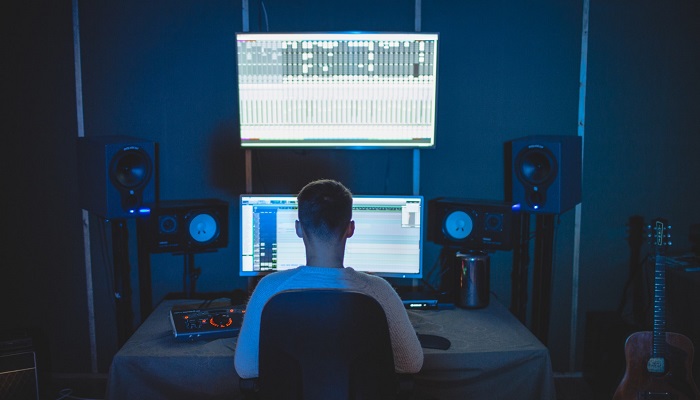
It’s not always easy to count the beats of any song or musical piece. Some people only count the beats for 15 seconds, then multiply the number by four. It makes the process easier, but it’s still hard for some people to do it.
You can alternatively use a Digital Audio Workstation to do it. Most software are able to detect the bpm or the tempo for you automatically. They come in handy if you don’t know the genre you’re listening to or if you’re using a sample track.
If you don’t use Digital Audio Workstation, you can always opt for any of the apps or websites that provide bpm calculators. There’s Beats per minute online, for example.
Alternatively, there are databases you can use to obtain the bpm of popular songs. You can use BPMdatabase, Tunebat, or Songbpm.
The Standard BPMS of Popular Music Genres/Styles
Although there isn’t a standard bpm for music, some genres can be identified by their tempo or bpm. Here’s a roundup of the most common genres and their bpm measurements.
Jazz
Jazz is best known for its swing rhythms, improvisation, and syncopations. It originated around the 20th century in the US, and it has varying bpm. Some jazz songs can run on 60 beats per minute, while other pieces may have a bpm of 320.
It’s hard to classify jazz music into a standard bpm; it all boils down to the song’s beat and the time interval between the beats.
Pop

Pop music generally ranges from 104–150 bpm. It varies according to the song’s style and the year of its release.
The average tempo of the best-selling pop songs in 2020 was 122 bpm. Meanwhile, a decade earlier, the bpm was a bit higher, reaching 150 bpm in some songs.
Generally, average pop songs will stay around 116–124 bpm. The highest bpm of a pop song was probably hovering around 150 or so.
Rock
Rock songs typically go at a faster beat than pop, reggae, and hip hop. The average bpm of rock songs is around 110–170, with a time signature of 4/4. In other words, a measure takes four beats to complete.
The music is identified by its driving rhythms, electric guitars, and powerful bass lines.
Hip Hop
The main feature of hip-hop music is the harmonious action of the beat and the singer, along with the weaving melodies that define the theme. Some people describe it as a cultural movement rather than a genre, and it’s somehow true.
Hip hop music plays at a bpm ranging from 60 to 100.
Reggae

If you’re ever heard of Bob Marley, you’re probably familiar with reggae songs. They’re best known for the prominence of the backbeat, and they use a 4/4 meter. The number of beats per minute is usually 80–110, which is a bit slower than similar commercial genres.
The musicians also may throw in some off-beat rhythms when the song calls for it, so it ends up in idiosyncratic rhythms. But what gives the music its jumpy feel is the staccato beats played on the off-beats of the measures, which are usually played by pianos or guitars.
House
House music originated in Chicago around the early ‘80s. It’s known for the accented bass drums that come out with every beat.
The average bpm of house music goes from 115 to 150. If bass or drum is included, the beat gets a bit faster, reaching around 160–180 beats per minute.
Waltz
Waltz music is classified as slow; it runs approximately 28–39 bars per minute, which translates to about 84–90 beats. Its time signature is ¾, and the first beat of its measures is usually prominent and accented. The Pale Shadow waltz is a perfect example of that.
Electro
Electro dance music includes a variety of subgenres, such as trance, breakbeat, gabber, techno, and hardcore. It has an average bpm of 120–140, but some styles may hit as high as 200 bpm.
Techno
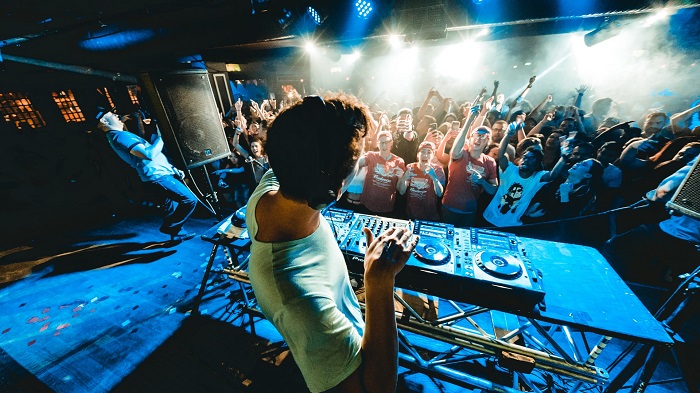
Techno is a subgenre of electro music, and it’s known for its repetitive rhythms running in the background of a regular beat. It’s majorly based on the beat, and its bpm goes from 100 to 170. Some musicians can even go faster.
Jive
Jive is a well-known group of swing dance music that originated in the US by African Americans. It came out nearly the same time as the swing style of jazz, around the mid-twentieth century.
If you’re not familiar with it, you may have heard about the East Coast or the Lindy hop swing, which are parts of it.
The music runs in a 4/4 time signature, and it goes through 38–44 measures in each minute. That translates to around 152–176 beats per minute. You can listen to the Bar Room Boogie for an example.
Is There Any Other Way to Measure the Tempo?
BPM isn’t the only way to refer to the tempo of a musical piece. Some composers also use the Italian terminology, and most musicians these days use the modern language. Here’s a brief about each method.
Italian Terminology
The Italians developed the language of music, and people used their language for centuries. Italian terminology is still used to this day in classical music.
When referring to the tempo, there are a lot of Italian words that determine it, using information about the music’s speed. The most famous Italian tempo terms are andante, presto, allegro, and largo, but there are a lot of other indications that classical musicians are familiar with.
Modern Language
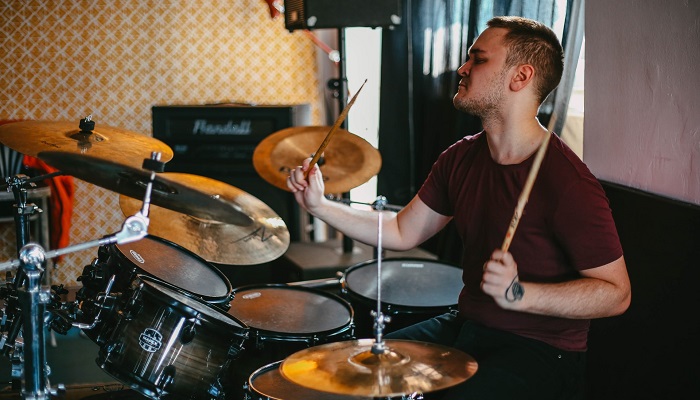
Rock and pop musicians hardly use the Italian terminology, and it’s pretty justified. Imagine someone classifying a rock song as an allegro; it’s pretty funny!
That’s why the modern language has been developed, and it includes casual English terms, such as ‘relaxed,’ ‘fast,’ moderate,’ and ‘slow.’
Usually, one member of the band establishes the tempo by a particular move. It may be the drummer striking his sticks or any solo introduction.
How to Determine the Right BPM for Your Creative Project
The tempo of the song, or its BPM, typically determines its mood. You’ll have to use the tempo if you want your audience to have a specific feeling while listening to the song. As you’ve understood from above, when the BPM is higher, the song is faster, and vice versa.
Whether you want your rhythm to be exciting, intense, dramatic, romantic, or sad, BPM is your way to do it.
Luckily for you, there are specific ranges for different tempos. They may help you determine the best BPM range for your music. Here’s a roundup:
- Very slow: 40–60 bpm
- Less slow: 60–66 bpm
- Moderately slow: 66–76 bpm
- Walking speed: 76–108 bpm
- Moderate: 108–120 bpm
- Fast: 120–168 bpm
- Faster: 168–200 bpm
- Very Fast: 200–300 bpm

